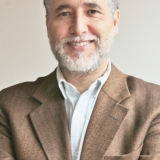Using Bogota’s system of socioeconomic division, the “strata”, we show that falling ill with a serious case of COVID has been over eight times more likely for an individual in the lowest stratum, where the poorer population concentrates, compared to one in the highest. Other pieces of evidence are consistent with this being driven by more exposure to contagion, at least partly driven by people in the lower strata being:
1) Less likely to be in occupations fit for telework;
2) Not only more vulnerable ex ante but also disproportionately hit by the economic effects of the crisis, and therefore pushed to go to work;
3) Subject to more crowding at home;
4) Less likely to recognize a high risk of contagion. The mechanisms that we quantify will imply a widening of the socioeconomic gaps resulting from the pandemic, in one of the world’s most unequal societies.

